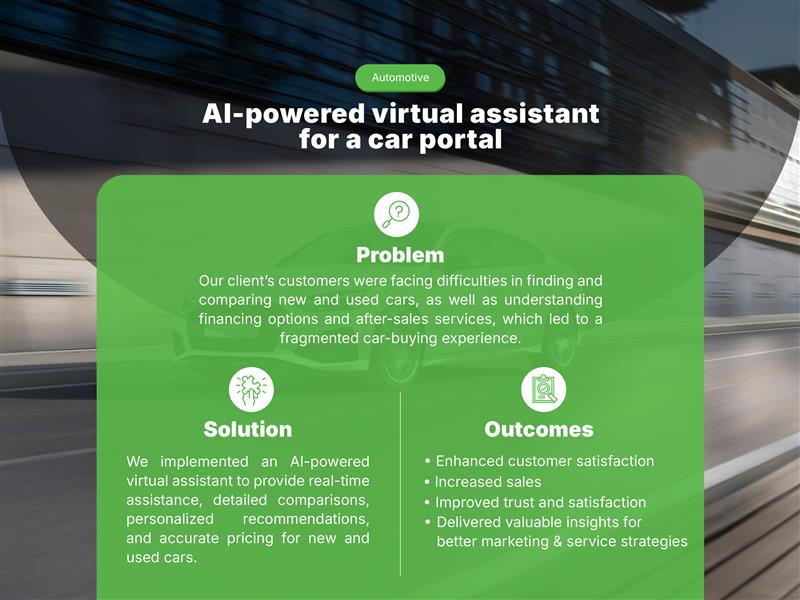2025 is around the corner and generative AI has captured the world’s attention in ways we couldn’t have imagined just a few years ago. Businesses everywhere are waking up to the fact that generative AI isn’t merely a current craze. It’s rapidly evolving from creating art and revolutionizing business operations to becoming a game-changing force that businesses now see as essential for driving growth.
As organizations begin to comprehend its true potential fully, the conversation has shifted. It’s no longer “What is generative AI?” but “How can we leverage it to stay ahead of the competition?” This growing acknowledgment is reflected in a striking statistic: 72% of global enterprise CEOs believe that adopting advanced generative AI is the key to gaining a strong competitive edge in the market.
Yet, this enthusiasm hasn’t come without challenges. Concerns around security, responsible deployment, and ethical use of generative AI linger, but they haven’t slowed the momentum. Whether it’s transforming retail experiences, enhancing fintech solutions, or innovating in consumer goods, the use cases for generative AI continue to expand, making it a driving force behind the next wave of digital transformation.
In this blog, we’ll explore some of the most promising and practical applications of generative AI. We will also uncover Confiz’s innovative generative AI solutions that have revolutionized industries with impactful results.
The impact of Generative AI: A key enabler for business growth and creativity
With generative AI’s ability to generate new, realistic content, such as text, images, audio, and more, by learning from massive datasets, businesses are unlocking new levels of creativity and efficiency. For example, it’s used to generate compelling marketing copies, innovative design product prototypes, and create hyper-personalized customer experiences, all at scale. And that’s not all. Generative AI also streamlines complex workflows and automates tasks that once took hours or days. As generative AI adoption continues to grow in the age of data and AI, businesses are not just slashing costs and saving time, they’re delivering more engaging, tailored products and services that resonate with customers in ways never before possible. Some of the most popular generative AI tools are Midjourney, DALL·E 2, Google Bard, and ChatGPT.
Gartner predicts that by 2026, over 100 million people will rely on generative AI to help complete their work – a clear sign of how seamlessly this technology is becoming part of our everyday lives. No matter whether you’re a business leader looking to outpace competitors or an individual seeking to amplify your creativity and productivity, generative AI tools have leveled up the playing field for all.
Quick insights: How to start your generative AI journey: A roadmap to success.
Use cases for generative AI: Real-world applications that matter
According to McKinsey, most of the value from generative AI is concentrated in just a few key areas. Their analysis of 16 business functions found that four areas – customer operations, marketing and sales, software engineering, and research and development could drive around 75% of the annual impact from the use cases for generative AI.

Let’s explore how the different use cases for generative AI are redefining the way we think, create, and work.
Coding assistance for developers
Generative AI transforms software development into a faster, smarter, and more creative process. Generative AI tools for software development act as an intelligent coding assistant. They empower developers to generate code snippets, optimize their work, and even debug errors, all in real time.
Key benefits:
- Enhanced productivity: Automate repetitive tasks and reduce coding errors.
- Faster development cycles: Accelerate the journey from concept to code.
- Improved code quality: Utilize generative AI large language models to produce cleaner, more efficient code.
Industry trends reflect the growing reliance on AI-driven solutions. By 2025, 30% of enterprises will have implemented an AI-augmented development and testing strategy, up from just 5% in 2021.
Customer support on demand
Generative AI is revolutionizing customer support, turning it into an always-on, instant problem-solving powerhouse. With generative AI chatbots and virtual assistants leading the charge, customer queries are understood, addressed, and resolved in real time, delivering personalized interactions that feel natural and engaging.
Key benefits:
- Always-on service: Provide 24/7 support without downtime.
- Reduced costs: Automate repetitive support tasks.
- Enhanced satisfaction: Improve resolution times and personalization, leading to happier customers.
For businesses, the benefits are twofold: reduced operational costs and happier customers. AI-powered chatbots help summarize issues, suggest solutions, and accelerate resolutions, transforming virtual assistance into a near-human experience. The result? A smarter, faster, and more satisfying customer support system for everyone involved.















